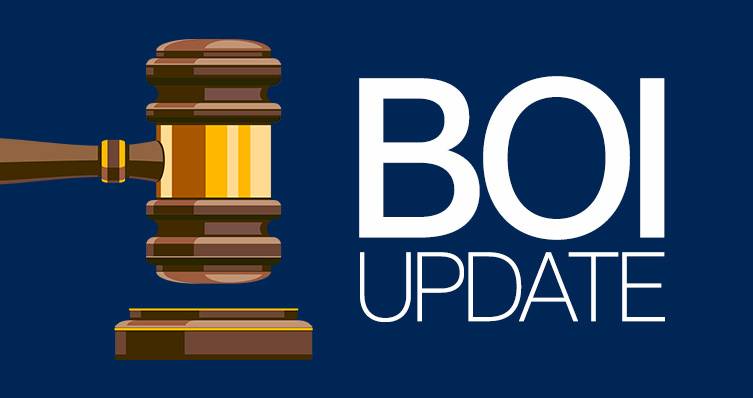A Republican-led White House, Senate, and House have indicated they plan to act swiftly to make broad changes to the federal tax system. Congress is already working on legislation that would extend and expand provisions of the sweeping Tax Cuts and Jobs Act (TCJA), as well as incorporate some of President Trump’s tax-related campaign promises.
To that end, GOP lawmakers in the U.S. House of Representatives have compiled a 50-page document that identifies potential opportunities, as well as how much these tax and other fiscal changes would cost or save. Here’s a preview of potential changes that might be on the horizon.
Multiple tax cuts
The TCJA is the signature tax legislation from Trump’s first term in office, and it cut income tax rates for many taxpayers. Some provisions — including the majority affecting individuals — are slated to expire at the end of 2025. The nonpartisan Congressional Budget Office estimates that extending the temporary TCJA provisions would cost the government $4.6 trillion in lost tax revenue over 10 years.
In addition to supporting the TCJA, Trump has pushed to reduce the 21% corporate tax rate to 20% or 15%, with the intention of generating growth. He also supports eliminating the 15% corporate alternative minimum tax imposed by the Inflation Reduction Act (IRA), signed into law by President Biden. It applies only to the largest C corporations.
Regarding tax cuts for individuals beyond TCJA extensions, Trump has expressed support for:
- Eliminating the estate tax, which currently applies only to estates worth more than $13.99 million
- Repealing or raising the $10,000 cap on the deduction for state and local taxes
- Creating a deduction for auto loan interest
- Eliminating income taxes on tips, overtime pay, and Social Security benefits
He’s also said he wants to cut IRS funding, which would reduce expenses but also reduce revenues. In all, the tax-cutting plans would significantly drive up the federal deficit.
Possible revenue offsets
The House GOP document outlines numerous options beyond spending reductions to pay for the tax cuts. For example, it lists tariffs — a major plank in Trump’s campaign platform — as a potential boost. While Trump insists that the exporting countries will pay the tariffs, that cost more often is the responsibility of the U.S. importer. Economists largely agree that at least part of the cost of higher tariffs would be passed on to consumers.
The GOP document suggests a 10% across-the-board import tariff. Trump, however, has discussed and imposed varying tariff amounts, depending on the exporting country. The 25% tariffs on Canadian and Mexican products, which were imposed shortly after he began his new term, have been paused until March 4. An additional 10% tariff on Chinese imports took effect on February 4.
In addition, Trump said tariffs on goods from other countries, including the 27-member European Union, could happen soon.
The House GOP document also examines generating savings through eliminating or lowering other tax breaks. Here are some of the options:
The mortgage interest deduction. Suggestions include eliminating the deduction or lowering the current $750,000 limit to $500,000.
Head of household status. The document looks at eliminating this status, which provides a higher standard deduction and certain other tax benefits to unmarried taxpayers with children compared to single filers.
The child and dependent care tax credit. The document considers eliminating the credit for qualified child and dependent care expenses.
Renewable energy tax credits. The IRA created or expanded various tax credits encouraging renewable energy use, including tax credits for electric vehicles and residential clean energy improvements, such as solar panels and heat pumps. The GOP has proposed changes ranging from a full repeal of the IRA to more limited deductions.
Employer-provided benefits. Revenue could be raised by eliminating taxable income exclusions for transportation benefits and on-site gyms.
Health insurance subsidies. Premium tax credits are currently available for households with income above 400% of the federal poverty line. (Those amounts phase out as income increases.)
Revenue could be raised by limiting such subsidies to what the document calls the “most needy Americans.”
Education-related breaks are also being assessed. The House GOP document looks at how much revenue could be generated by eliminating credits for qualified education expenses, the deduction for student loan interest, and federal income-driven repayment plans. The GOP is also weighing the elimination of interest subsidies for federal loans while borrowers are still in school and imposing taxes on scholarships and fellowships, which currently are exempt.
There may be hurdles
Republican lawmakers plan on passing tax legislation using the reconciliation process, which requires only a simple majority in both houses of Congress. However, the GOP holds the majority in the House by only three votes.
That gives potential holdouts within their own caucus a lot of leverage. For example, deficit hawks might oppose certain proposals, while centrist members may prove reluctant to eliminate popular tax breaks and programs.
The GOP hopes to enact tax legislation within President Trump’s first 100 days in office, but that may be challenging as Republican representatives are likely to oppose moves that would hurt industries in their districts, such as the reduction or elimination of certain clean energy incentives.
© 2025 KraftCPAs PLLC










